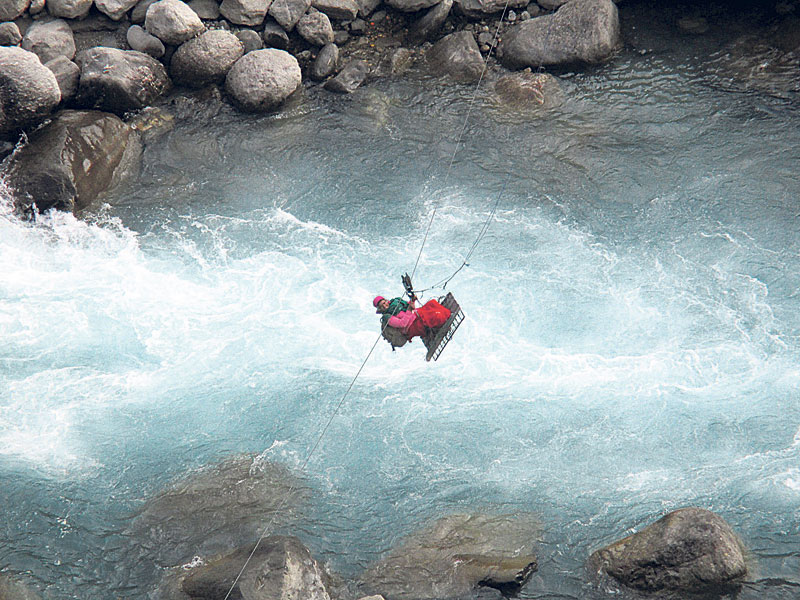When it comes to facing challenges in everyday life, the people of Karnali top the national list. Life here is hard due to the remoteness and harsh geography of the region. Many residents still rely on tuins—manually operated ropeways—to cross rivers. Many Nepalis were hopeful when then-Prime Minister KP Sharma Oli promised in 2015 to eliminate all dangerous tuins ( i.e. a manually operated cable crossing system used to traverse rivers) and replace them with suspension bridges within two years. However, this promise remains largely unfulfilled, even though tuins are outdated and dangerous to use. Despite allocating more than Rs 3 billion for the project, with the objective of constructing at least 187 bridges, the commitment has only been partially realized. In Karnali Province alone, at least 50 tuins are still in operation. These risky means of river crossing continue to endanger lives—particularly those of women, children, and the elderly—on a daily basis. In Humla, one of Nepal's most remote districts, 15 tuins are still in use, including six that cross the Karnali River. Surkhet has eight, while Kalikot and Jajarkot each have twelve. Although Dailekh, Mugu, and Dolpa have fewer tuins, the risk remains significant. The exact number in Salyan, Jumla, and Rukum West is unknown, but the situation is no less serious.
The Karnali provincial government has invested Rs 15 million in the project and has promised to eliminate all tuins in the province by the end of this fiscal year. But progress has been slow. Although 108 of the 137 tuins nationwide have reportedly been replaced, many people are still forced to use dangerously suspended ropes to cross rivers. Most remote villages in Karnali continue to wait for bridges, despite the government allocating funds and introducing favorable policies. In districts like Jumla and Humla, locals are compelled to use tuins in the absence of bridges, as rivers cut through villages and settlements. Women tie children to their backs and climb into corroded baskets that swing from wires. Men and women of all ages hang high above fast-moving rivers to reach markets, schools, or hospitals. The question is: Why has such a fundamental issue of public safety not been fully addressed, even a decade after the promise was made? One reason may be the rapid changes in government since 2015. In addition, coordination among federal, provincial, and local governments remains poor.
Karnali govt launches campaign to replace tuins with suspension...

Meanwhile, the people of Karnali are calling for safe travel. It shouldn’t take this long. Every day, tuins put the lives of people in remote areas at risk. No one should ever be forced to put their life on the line just to reach work, school, or the hospital. This issue must be made a federal priority. Funds must be urgently released and streamlined toward implementation projects. Indeed, saving lives should be at the top of the government's priority list. A government is judged not only by the policies it formulates but also by its ability to urgently act for the welfare of its people—especially when their lives are at stake due to these outdated, manually operated ropeways that remain a scourge for people in far-flung areas.





































